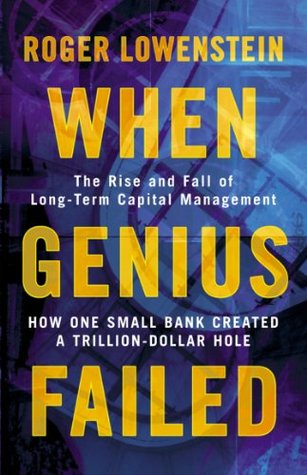More on this book
Community
Kindle Notes & Highlights
Read between
March 18 - April 11, 2024
Meriwether, attired in a pale blue shirt and dark blue tie, attended St. John de la Salle Elementary and later Mendel Catholic High School, taught by Augustinian priests. Discipline was harsh. The boys were rapped with a ruler or, in the extreme, made to kneel on their knuckles for an entire class. Educated in such a Joycean regime, Meriwether grew up accustomed to a pervasive sense of order.
Then Arbitrage had a banner year, and Hilibrand, who got the biggest share, took home a phenomenal $23 million.
But there was one significant difference: Meriwether planned from the very start that Long-Term would leverage its capital twenty to thirty times or even more.
In 1994, Long-Term noticed that this spread was unusually wide. The February 1993 issue was trading at a yield of 7.36 percent. The bond issued six months later, in August, was yielding only 7.24 percent, or 12 basis points, less.
Merrill Lynch agreed to waive its usual haircut requirement and go along. So did Goldman Sachs, J. P. Morgan, Morgan Stanley, and just about everyone else. One firm that balked, PaineWebber, got virtually none of Long-Term’s business.
As Brooksley Born, chairwoman of the CFTC, would candidly admit, “We didn’t see any major warning bells and we knew [the information] was fairly widely available.”5 Thomas Bell, Long-Term’s outside counsel, was more right than most when he observed, “People got statements. It was a failure to connect the dots.”
Long-Term, which had calculated with such mathematical certainty that it was unlikely to lose more than $35 million on any single day, had just dropped $553 million—15 percent of its capital—on that one Friday in August.
Buffett, who instinctively tightened his grip on his company’s cash when times got tough, wanted to know if a Berkshire insurance subsidiary was holding adequate collateral on swap trades.
That day, Russian stock prices would fall 17 percent, leaving them a cool 84 percent below their level at the start of the year.


